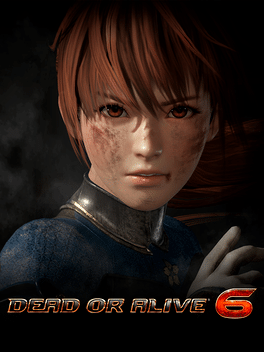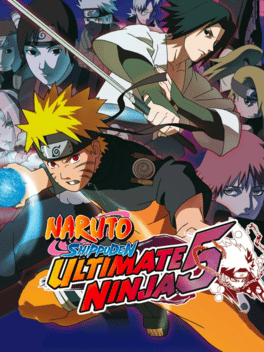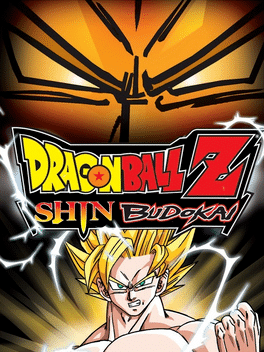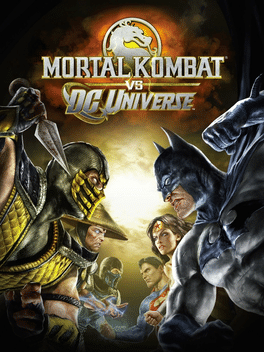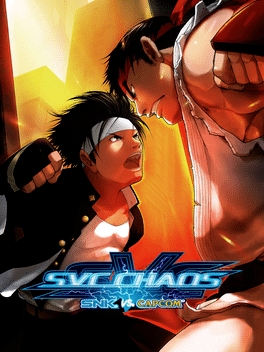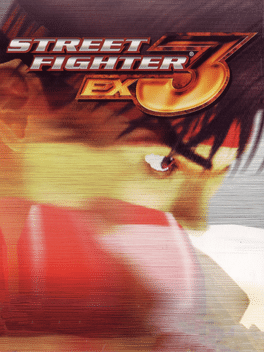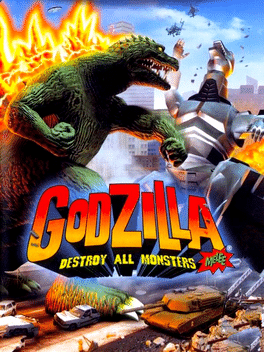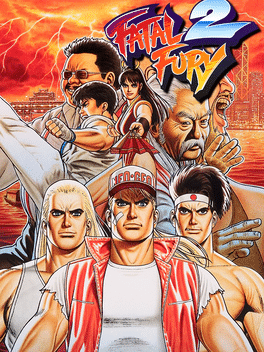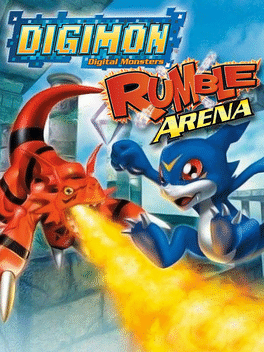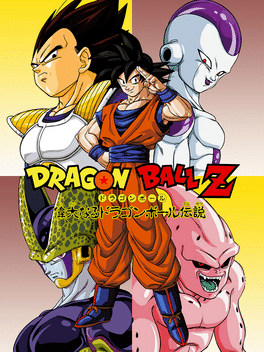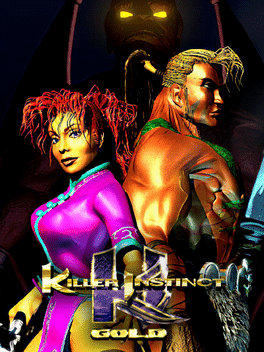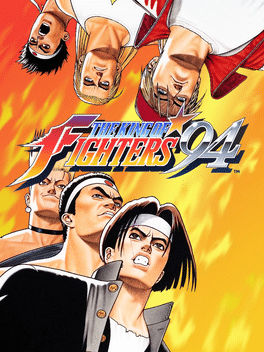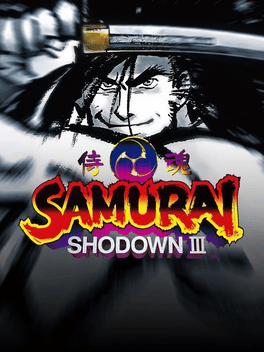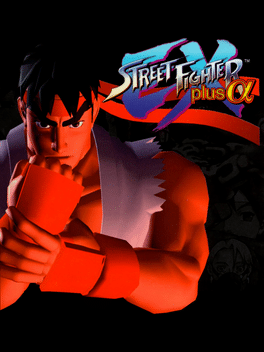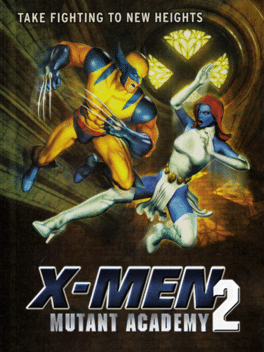Top Rated Nintendo 64 Games - Page 7
-
Teenage Mutant Ninja Turtles: Tournament Fighters
1993
star 6.9This game's controls use a four-button scheme (two punches and two kicks, weak and strong). A particular feature is the possibility to use a super special attack. In order to achieve this, the player must fill a green bar under the life bar, by hitting their opponents. Once full, the player must press the two strong attack buttons simultaneously. There is also the option of enhancing the speed of the game, making the fights more intense but also more difficult to follow. In addition to the main and versus modes, there is a story mode in which the Turtles must rescue April O'Neil and Splinter from Karai's clutches. The Turtles must travel across the US in their Turtle Blimp, defeating other fighters and collecting information. Only the four of them can be playable whereas the other characters (as well as a turtle clone) are the opponents. There is no Mutagen Meter in story mode. There is also a watch mode, which features computer-controlled characters. -
Dead or Alive 6
2019
Dead or Alive 6
2019
star 6.9Dead or Alive 6,produced by Koei Tecmo Games,features fast-paced 3D fighting entertainment with multi-tiered stages that are now both dynamic and critical parts of the competitive experience. -
Marvel vs. Capcom: Infinite
2017
star 6.9Marvel vs. Capcom: Infinite will feature a variety of exciting and accessible single player modes and rich multi-player content for new players and longtime fans alike. In addition to single player Arcade, Training and Mission modes, a visually stunning and immersive cinematic Story Mode will put players at the center of both universes as they battle for survival against a sinister new threat. Marvel vs. Capcom: Infinite is being built to highlight a combination of iconic locations and fan favorite characters from both universes, including Captain Marvel and Iron Man from the Marvel side, and Ryu and Mega Man X from Capcom. -
My Hero One's Justice
2018
star 6.9"Your Justice Begins Now! Whether you want to see the destruction of humanity or believe heroes should defend those in need, fight to prove your justice in MY HERO ONE’S JUSTICE. The popular Weekly Shonen Jump manga series comes to life, as players experience the abilities of fan favorite characters such as Izuku Midoriya, Katsuki Bakugo, Tomura Shigaraki, and many more in this arena brawler, where you’ll get to choose between hero and villain in your path to justice. Utilize Quirks and call upon your side-kicks to activate powerful attacks where your environments are at your disposal in total field destruction. The battle doesn’t just confine you to the ground - take the fight upwards where buildings and walls become a part of the action. " -
Naruto Shippuden: Ultimate Ninja 5
2007
star 6.9This is the fifth installment in the Naruto: Ultimate Ninja series. The game continues the Naruto Shippūden storyline, and includes the first meeting between Sasuke and Naruto during this timeline. -
Dragon Ball Z: Shin Budokai
2006
star 6.9The wildly popular Dragon Ball Z series makes its first appearance on the PlayStation Portable with Dragon Ball Z: Shin Budokai. Play as the good guys or the bad guys in this high-energy fighting game. You can use flight and energy abilities, transformations, and counterattacks, as well as character-specific attacks featured in the Dragon Ball Z TV show. There are 18 playable characters and seven story modes to choose from. Challenge other gamers to multiplayer duels via the PSP Wi-Fi connection. -
Mortal Kombat vs. DC Universe
2008
star 6.9In this arcade-style fighting game, both DC and Mortal Kombat universes are represented by 10 champions each, and one "boss" character, for a total of 22 fighters. Play is similar to the 2D Mortal Kombat games (with some 3D elements), focusing more on the special move aspect than the complex combos found in the previous three games (Deadly Alliance, Deception, Armageddon). As with any Mortal Kombat game, Fatalities are still present for the Kombatants and villains, though slightly toned down to meet the DC standards of heroes such as Superman and Batman keeping to their moral code and not killing their opponent. As a result, the DC heroes perform "Heroic Brutalities", which effectively put their opponent out of commission. -
SNK vs. Capcom: SVC Chaos
2003
star 6.9SNK vs. Capcom: SVC Chaos primarily utilizes the command system of The King of Fighters series, incorporating light/strong kicks, punches, cancels and charging attacks. Unlike its predecessor, Capcom vs. SNK 2, this game lacks both air guards and a "groove system", instead focusing on quicker gameplay. Characters are provided with a basic 3-level bar system for executing super-special attacks with basic filling options attributed to strikes and damage. Additionally, the sprites from the various series received new models and some special effects were changed in the command lists (for example, the player cannot increase the damage of the Zujou Sashi used by Choi Bounge by tapping the buttons anymore). -
Street Fighter EX3
2000
Street Fighter EX3
2000
star 6.9Street Fighter EX3 is the final game in the Street Fighter EX series series, taking the gameplay and additional moves of EX2, and adding a tag-team element. Multiple characters from the famous Street Fighter series return and clash with Arika's own characters. -
Godzilla: Destroy All Monsters Melee
2002
star 6.8Godzilla: Destroy All Monsters Melee is a fighting game developed and published by Pipeworks Software, Inc. for the Nintendo GameCube in 2002. The game was later released for Game Boy Advance as Godzilla: Domination!. A version for the Xbox with additional content was released in 2003. A PlayStation 2 version was planned, but later cancelled. -
Fatal Fury 2
1992
Fatal Fury 2
1992
Neo Geo AES Arcade Super Nintendo Entertainment System Sharp X1 Wii Sega Mega Drive/Genesis Neo Geo CD Turbografx-16/PC Engine CD Super Famicomstar 6.8After Geese Howard's death in the original Fatal Fury, a mysterious nobleman becomes the sponsor of the new "King of Fighters" tournament. This time, the tournament is held worldwide with fighters around the globe competing. As the single player mode progresses, the mysterious challenger begins defeating the participants from the previous Fatal Fury game, searching for the man responsible for defeating Geese. -
Digimon Rumble Arena
2001
Digimon Rumble Arena
2001
star 6.8Digimon Rumble Arena is a crossover fighting video game developed and published by Bandai in association with Hudson Soft for the PlayStation video game console. Players are able to choose from up to 24 characters (fifteen of which need to be unlocked) from the Digimon Adventure and Digimon Tamers seasons of the Digimon anime, such as Terriermon, Agumon, Gatomon, and Renamon. -
Dragon Ball Z: The Legend
1996
star 6.8Dragon Ball Z: Legends is a fighting game which utilizes a unique system of play that is different from most other fighters. The graphics feature 2-D sprites in a three dimensional world. Although each battle begins on the ground, the majority of the action is featured skyward. The story mode of the game is divided into episodes, and it encompasses all of Dragon Ball Z, featuring the most important battles of the series. -
Evil Zone
1999
Evil Zone
1999
star 6.8Evil Zone or Eretzvaju (封神領域エルツヴァーユ Fūjin Ryōiki Erutsuvāyu) is a fighting game released for the PlayStation console. It was developed by Yuke's Future Media Creators and published by Titus Software in 1999. The player can choose from ten characters to fight in several game modes including story mode, arcade mode, versus mode, practice and survival mode. The story mode is a unique aspect to the game and sets it apart from other fighting games. Each character has a unique story mode which progresses like an ongoing television program, complete with episode names and previews with voice acting. As the mode progresses, you learn more about the character's backstory and why they are fighting, an incentive to play through the game with each character. Evil Zone is also one of the few games to feature a fully fleshed out story mode for its boss character. -
Killer Instinct Gold
1996
Killer Instinct Gold
1996
star 6.7Rare was a prominent second-party developer for Nintendo, and produced the Killer Instinct series exclusively for the company as their response to Mortal Kombat. Following the success of the 1995 Killer Instinct port for the Super Nintendo home console, Rare began a sequel for the same console. They transitioned development to the Nintendo 64 upon its announcement. Gold was scheduled as a launch title for the new console but was delayed until its North American release in November 1996. It received a wider release in May 1997. It was also included in Rare's 2015 Xbox One retrospective compilation, Rare Replay. -
The King of Fighters '94
1994
star 6.7Rugal Bernstein is an incredibly rich and notorious arms and drug trafficker, as well as an incredibly skilled and ruthless fighter. Having become bored with the lack of competition, Rugal decides to host a new King of Fighters tournament. Rugal has his secretary travel to eight destinations around the world and invite fighters to his new tournament. Unlike the previous KOF tournaments depicted in the Fatal Fury series, the new King of Fighters is a team tournament, with eight teams of three, each representing a different nationality, participating this time. Most characters come from other SNK games, such as Team Italy, which is composed of three heroes from the original Fatal Fury: Terry Bogard, Andy Bogard and Joe Higashi. The two heroes from Art of Fighting (Ryo Sakazaki and Robert Garcia) are featured along with their mentor and Ryo's father (Takuma Sakazaki) make up Team Mexico. Team Korea features Kim Kaphwan from Fatal Fury 2 as the leader of two convicts he's trying to reform Chang Koehan and Choi Bounge, -
Samurai Shodown III
1995
Samurai Shodown III
1995
Neo Geo AES Arcade PlayStation 3 Wii PC (Microsoft Windows) Sega Saturn PlayStation PlayStation Portable Neo Geo CDstar 6.7Samurai Shodown III was to be the start of a bold new direction for the franchise. The most obvious difference between this game and the others in the series is the notably darker aesthetic. The more light-hearted characters (Earthquake, Cham Cham, and Gen-an to name a few) from the previous games have been excised, and even the kabuki master, Kyoshiro Senryo, received a redesign, transforming him from a flamboyant stage performer into a grim-faced, muscular man. All of the characters have been completely redrawn. The animation is very smooth for all characters, another departure from the graphical style of the second game. -
Street Fighter EX plus Alpha
1997
star 6.7Street Fighter EX plus Alpha is the Playstation-exclusive home console port of the arcade game Street Fighter EX Plus, itself an updated version of Street Fighter EX. This version includes two new characters (Dhalsim and Sakura), additional game modes, as well as an arranged soundtrack and CG endings. -
Dragon Ball Z: Budokai Tenkaichi
2005
star 6.7Dragon Ball Z: Budokai Tenkaichi lets you play as more than 60 characters from the Dragon Ball Z TV series. You can battle using authentic special attacks of each character as you run, fly, and swim through fully destructible and free-roaming levels. Design your own character by assigning and upgrading 10 different attributes. Dragon Ball Z: Budokai Tenkaichi has multiple game modes for both one and two players. -
X-Men: Mutant Academy 2
2001
star 6.7X-Men: Mutant Academy 2 is a PlayStation video game, the sequel to X-Men: Mutant Academy. Both feature the X-Men in a 3-D fighting arena similar to Mortal Kombat 4. Like its predecessor, the game allows the player to select from several heroes and villains and includes many of the signature moves from the comic. The game also includes a behind-the-scenes look at X-Men: The Movie concept sketches, costumes and other similar material.

